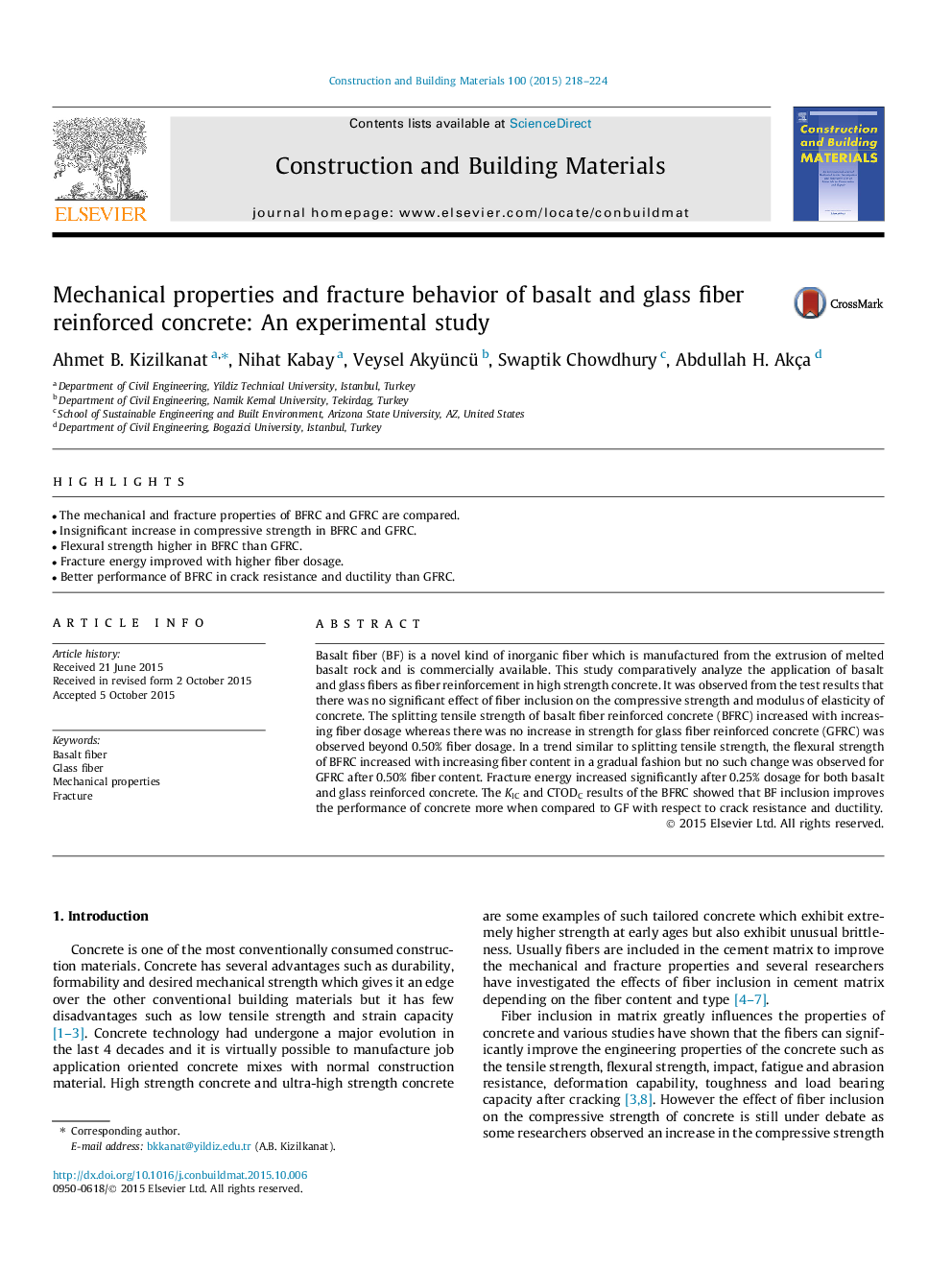| کد مقاله | کد نشریه | سال انتشار | مقاله انگلیسی | نسخه تمام متن |
|---|---|---|---|---|
| 256556 | 503555 | 2015 | 7 صفحه PDF | دانلود رایگان |
• The mechanical and fracture properties of BFRC and GFRC are compared.
• Insignificant increase in compressive strength in BFRC and GFRC.
• Flexural strength higher in BFRC than GFRC.
• Fracture energy improved with higher fiber dosage.
• Better performance of BFRC in crack resistance and ductility than GFRC.
Basalt fiber (BF) is a novel kind of inorganic fiber which is manufactured from the extrusion of melted basalt rock and is commercially available. This study comparatively analyze the application of basalt and glass fibers as fiber reinforcement in high strength concrete. It was observed from the test results that there was no significant effect of fiber inclusion on the compressive strength and modulus of elasticity of concrete. The splitting tensile strength of basalt fiber reinforced concrete (BFRC) increased with increasing fiber dosage whereas there was no increase in strength for glass fiber reinforced concrete (GFRC) was observed beyond 0.50% fiber dosage. In a trend similar to splitting tensile strength, the flexural strength of BFRC increased with increasing fiber content in a gradual fashion but no such change was observed for GFRC after 0.50% fiber content. Fracture energy increased significantly after 0.25% dosage for both basalt and glass reinforced concrete. The KIC and CTODC results of the BFRC showed that BF inclusion improves the performance of concrete more when compared to GF with respect to crack resistance and ductility.
Journal: Construction and Building Materials - Volume 100, 15 December 2015, Pages 218–224
